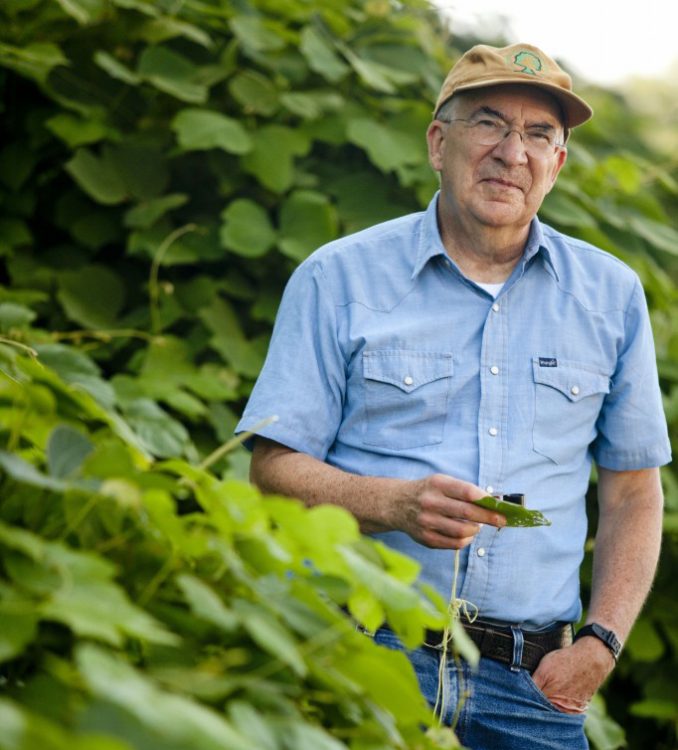2002 Daniel Simberloff
Dr. Daniel Simberloff is a biologist and ecologist who earned his Ph.D. from Harvard University in 1969. He is currently Gore Hunger Professor of Environmental Science at the University of Tennessee and Editor-in-chief of the journal Biological Invasions.
Simberloff was born in 1942 in Wilson Borough, Pennsylvania, a small town near the Delaware River. As a young child, he collected insects, especially beetles, pinning and preserving them in cigar boxes as early as four years old. In addition to his collection of insects, Simberloff also caught and kept salamanders and musk turtles in a basin in his home. He cites being influenced by his uncle, who was a chemist. Consequently, he received science books and was taken to science lectures throughout his youth. He moved to New York City at age 11. Simberloff recalls really enjoying all school subjects, math in particular, despite the substandard teaching of the large underfunded city schools. He excelled in everything academic.
Simberloff received his A.B. from Harvard College in 1964, and later received his Ph.D. in Biology from Harvard University in 1969. He wanted to go to grad school for mathematics, but changed his mind after taking a major biology course as an undergrad. This led to his introduction to Edward O. Wilson. Simberloff became Wilson’s grad student, which began his career in ecology.
Simberloff studied and collaborated with E. O. Wilson with many textbooks and experimental studies to assess the theory of island biogeography. This won them the Mercer Award in 1971. He was questioned after his 1976 Science paper, where he contradicted his own theory. He claimed that most of the insect turnover in this assemblage was ephemeral and did not, therefore, confirm the theory. This was interesting in the sense that he was confident enough to question his own theory even after it was widely accepted. Society embraced his island biogeography, and it was used in designing nature reserves. Simberloff questioned the reserves, claiming large reserves aren’t always the best choice and in some cases small reserves might be better. In the early 80’s, Simberloff took on the MacArthurian paradigm of competitively structured communities. He championed the use of null models in community ecology. This changed the face of the field. He caused ecologists to question, “what would happen if one mechanism were removed?” He preached, “rely on the data to tell you how nature operates; don’t simply find the patterns that you’re supposed to find.” He was instrumental in making the presidential Executive order 13112 on invasive species, and he also serves on the IUCN Invasive Species Specialist Group and the IUCN Species Survival Commission.
Simberloff has served on the Board of Governors of the Nature Conservancy, the federal Invasive Species Advisory Committee, and the editorial boards of Biodiversity and Conservation, Oecologia, Biological Invasions, BioScience and Ecology. Simberloff was a faculty member at Florida State University from 1968-1997 before relocating to the University of Tennessee, Knoxville. He is currently a distinguished professor there in the Department of Ecology and Evolutionary Biology. He directs the University of Tennessee’s Institute for Biological Invasions. His more recent work focuses on the presence of invasive species, and raises the “specter of ‘invasional meltdown’”. At present, Simberloff has a long-term project in Patagonia on the invasion of conifer trees, involving introduced deer, boar, and fungi. Simberloff has a total of over 350 publications, and he is currently working on several papers on invasive biology.
The series of projects on insect communities on small mangrove islands, which started with his doctoral dissertation, was Simberloff’s earliest major contribution to the field of ecology. Simberloff is also recognized for a long series of papers on different statistical analyses of patterns and what they can tell us about underlying ecological mechanisms, especially which species are where, and the different sizes of coexisting species. This includes the work with Tamar Dayan on character displacement and on assembly rules and species combinations with Ed Connor and Michael Collins. This research caused a major shift in how researchers analyze pattern data. Simberloff is currently engaged in a set of ongoing research projects in Patagonia on conifer invasions.
